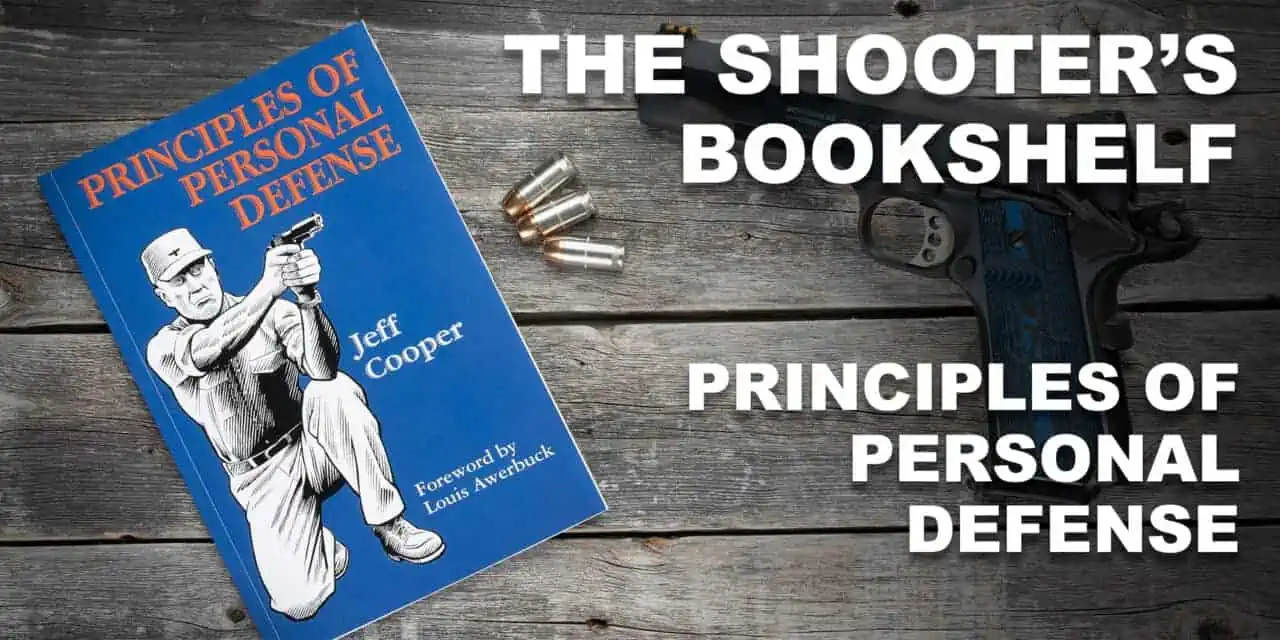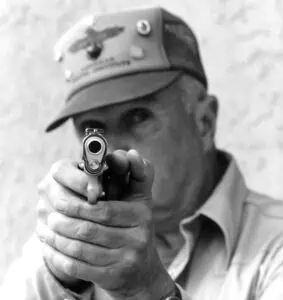Principles of Personal Defense: The Modern Technique Starts Here
Every occupation has its foundational documents. If you’re a photographer, you’re probably going to have to read Ansel Adams’ books on photography at some point. I’m certain there are similar texts for other professions. The object of this four-part series has been to provide you with a list of books that you can use as a foundation for living the safe and armed lifestyle. We began with “Left of Bang,” moved on to “The Law of Self Defense” and “In The Gravest Extreme,” and now we arrive at arguably one of the most influential books in American gun culture, Colonel Jeff Cooper’s “Principles of Personal Defense.”
There are reasons why I’ve written so much about the impact that Col. Cooper has had on American gun culture. He’s affected everything from creating the sport of practical shooting, to setting up firearms training, to influencing how we hold and shoot a pistol.
Start At The Very Beginning
In The Principles of Self Defense, Cooper lays out the ideas that shaped his approach to defensive firearms training. This is not the book for you if you’re looking for step-by-step instructions on how to hold a pistol correctly. Rather, this book is about the underlying concepts that drove Cooper’s ideas on how to stay safe in an unsafe world.
While we most often associate Col. Cooper with learning how to use a firearm as a defensive tool, the fact is, what’s inside this book is applicable to any defensive encounter, armed or not. “Principles of Personal Defense” is not a big book. It’s just 60 pages long, and reads very quickly. However, the ideas of Alertness, Decisiveness, Aggressiveness, Speed, Coolness, Ruthlessness, and Surprise inside this book could take years to fully digest.
One of the most striking things I found in the book is how Cooper talks about all of those principles in the context of an armed citizen putting up an effective response to an armed attacker. I have seen far too many training classes focus on an offensive mindset to a defensive encounter. It is not our job as armed citizens to go out and clean the bad guys off the streets of our town. That’s what the police are there to do. We don’t need to go looking for trouble. If trouble happens to us, we need to be ready to respond at the right time, with the right amount of alacrity and the right amount of violence. That, in essence, is what guides the ideas inside this book.
First Principles
As I said before, what is inside “The Principles of Personal Defense” is useful for almost any situation where you have to defend your life or the life of a loved one. It’s not just for when you happen to have a defensive firearm handy (which should be quite often), or a weapon of any kind. The ideas inside this book apply to any situation where you find yourself faced with an attacker who wishes to do you harm. Speed, decisiveness, surprise, and all the other principles work as well with a punch or a kick as they do with a draw from concealment.
“Principles of Personal Defense” was written in 1972, and in the introduction of the printing I own, Col. Cooper mentions he sees no reason to update the book to keep it current with the times. This, in my opinion, is the one flaw with the book. There are numerous mentions of notorious murderers in the book, but I recognized only a few of them. And I’m a news junkie. For instance, Col. Cooper tossed out the name “Starkweather” as an example of a ruthless killer. I had to pause to look up just who he was talking about. The principles of personal defense may not change over the years, but the names of the threats we face change. Col. Cooper passed away in 2006, so any opportunity to update the text is long gone. Be advised that you may need to pause from time to time to look up the occasional cultural reference as you read this book.
The Foundation Of The Modern Technique
The ideas inside the “Principles of Personal Defense” are timeless and should serve as the basis for further study and training. You won’t find detailed instructions on the latest techniques in use on gun ranges across the nation, but you will find ideas that will drive your journey towards a safer, more secure armed lifestyle.




